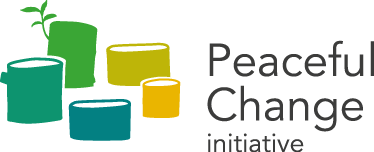What this tool is for
PCi’s conflict sensitivity matrix is designed to be used hand–in–hand with the interactions typology to systematically identify how aid activities affect the peace and conflict context. The matrix allows those designing and implementing assistance programmes (1) to reflect on the potential interactions between activities and the context, (2) to design adaptations to minimise risks and maximise positive contributions, and (3) to plan monitoring strategies. Developed to complement organisations’ existing risk management processes, the matrix is designed to be a practical and easy tool for producing conflict sensitivity assessments. For this reason, the document resembles other risk management tools.
When to use this tool
Organisations implementing programmes in conflict–affected contexts should have a conflict sensitivity matrix to refer to at any time during the intervention. The matrix should be developed at the beginning of the intervention and requires regular updates during implementation. The matrix needs to be systematically reviewed to monitor the risks and opportunities and to identify new ones. The result of the process is a conflict sensitivity assessment, which highlights the intervention’s potential positive or negative impacts on the context. These impacts may be intentional or unintentional, direct or indirect.
How to use this tool
You can use PCi’s conflict sensitivity interactions typology to identify how your programme may interact with the peace and conflict context where you operate. You can do this as an agenda item in a team meeting, or as a workshop. The tool can be updated during regular team meetings or project review meetings. It is important to consider who is around the table during these discussions. The greater the context expertise and the diversity of experience and perspective, the more robust the outcome is likely to be.
The tool
The conflict sensitivity matrix is a table comprising four columns. The purpose of each column is explained below.
Interactions | Description | Adaptations | Monitoring |
Column 1 – Interactions
Identifying a list of interactions is the first step to completing the matrix. Use the conflict sensitivity interactions typology for this. It can be helpful to discuss with colleagues which interactions from the typology are relevant, based on your understanding of the context. It is important to write down all the ways in which your intervention and the context will affect each other, whether these effects are direct and indirect, intended and unintended, positive or negative – including even the ones which seem obvious. Later you can refine the document, merging similar interactions or removing less-relevant ones.
Column 2 – Description
In the second column, we explain how activities impact the peace and conflict context or vice versa. It is important to be clear and explicit. We usually describe the interactions in three paragraphs. Firstly (1), we explain the risk or opportunity – what could happen. Then (2), we describe the possible impacts of interaction on the peace and conflict context – detailing the consequences of the interaction occurring, including any gendered impacts or impacts on marginalised groups. Finally (3), we explain why we suspect the interaction could happen, we cite sources, and we highlight its relevance.
Column 3 – Adaptations
The third column is dedicated to adaptations, where we determine our strategy for dealing with the interactions between our programmes and the context. We often divide adaptations into mitigations and responses. Mitigation strategies aim to reduce the likelihood of the risk occurring or to maximise the chances that the opportunity materialises. Responses are the actions that need to be taken if the event occurs. They aim to reduce the consequences of negative interactions or to maximise the consequences of positive ones.
Both mitigations and responses should be realistic and feasible, considering the flexibility of the programme and/or the donor and the budgetary constraints. It is important to develop mitigations and responses involving a variety of stakeholders; for example, staff that will implement the programme on the ground, and operational staff working in areas such as procurement or communications. Adaptations to programming need to be identified based on the specific programme/project activities, capacities and context.
You may face a conflict sensitivity dilemma when the balance between the opportunities and the risks linked to a programme is unclear and the risks of doing harm seem unavoidable. In these situations, it can be helpful to work your way through the four conflict-sensitive decision-making tests.
Column 4 – Monitoring
In the fourth column we include how we will monitor the risks and opportunities identified. Conflict sensitivity is an ongoing process that involves continually tracking changes in the conflict context and monitoring for anticipated and unanticipated interactions (both risks and opportunities).
We identify the indicators to disaggregate the risk/opportunity into measurable and monitorable proxies, then we indicate how we will identify them (e.g. news monitoring, interviews, public opinion surveys), and how often we should verify them (e.g. monthly, quarterly). Monitoring strategies can be loose and informal (i.e. observations during activities) or more formal and in-depth (i.e. academic study), depending on the relevance of the risk and/or opportunity, the level of interest in working on peace and conflict, and the resources available. You may want to disaggregate data so that you can monitor whether the impact of risks and opportunities affects men and women, or different socio-economic groups, differently.
The conflict sensitivity matrix is also available to download in PDF format on the following link:
